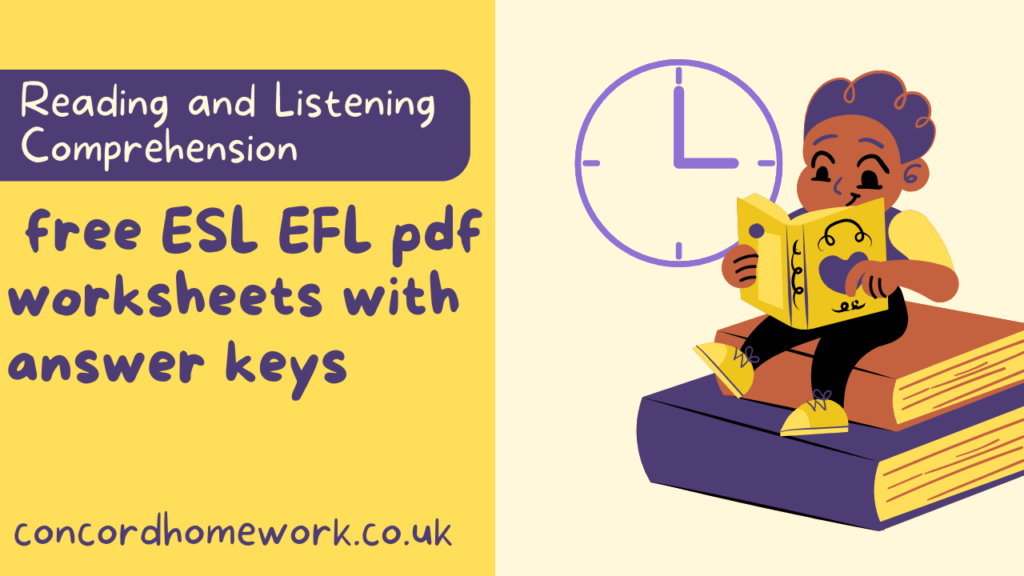Read and listen to the text then answer the questions.
This is a reading and listening comprehension. Students read, listen the answer the questions. This worksheet has an answer key.
Mastering Reading Comprehension: Techniques for Success
Reading comprehension is a vital skill that forms the cornerstone of academic success and lifelong learning. Whether you’re a student tackling textbooks or an avid reader diving into novels, understanding what you read and effectively answering questions about the text is essential. Fortunately, there are several techniques and strategies that can make this process more manageable and even enjoyable. Let’s explore some easy-to-apply techniques to enhance your reading comprehension skills:
1. Preview the Text: Before diving into the text, take a moment to preview it. Scan the title, headings, subheadings, and any illustrations or diagrams. This will provide you with a general overview of the content and help you anticipate what to expect.
2. Activate Prior Knowledge: Connect the text to your own experiences, background knowledge, and prior readings. This will help you make sense of the material and form meaningful associations, making it easier to understand and remember key concepts.
3. Set a Purpose for Reading: Establish a clear purpose for reading the text. Are you reading for information, entertainment, or analysis? Having a specific goal in mind will focus your attention and guide your reading comprehension efforts.
4. Read Actively: Engage with the text actively rather than passively. Use strategies such as highlighting or underlining key points, jotting down notes or questions in the margins, and summarizing key ideas in your own words. This will help you stay focused and retain information more effectively.
5. Break it Down: Break the text into manageable chunks or sections, and tackle each one systematically. Read slowly and carefully, pausing periodically to reflect on what you’ve read and check your understanding. Don’t hesitate to reread sections that are unclear or confusing.
6. Ask Questions: Pose questions as you read to clarify your understanding and deepen your engagement with the text. Ask yourself who, what, when, where, why, and how questions to extract key information and uncover underlying themes or messages.
7. Visualize: Visualize the events, characters, and settings described in the text. Creating mental images can enhance your comprehension and bring the text to life, making it easier to remember and analyze.
8. Summarize and Synthesize: After reading each section or the entire text, take a moment to summarize the main ideas and key points in your own words. Then, synthesize this information with your existing knowledge to form a cohesive understanding of the text as a whole.
9. Practice Active Reading: Regular practice is essential for improving reading comprehension skills. Challenge yourself with a variety of texts, ranging from articles and essays to fiction and non-fiction books. Set aside dedicated time for reading each day, and make a habit of applying the techniques and strategies outlined above.
By incorporating these techniques and strategies into your reading routine, you can enhance your reading comprehension skills and become a more confident and proficient reader. Remember that reading comprehension is a skill that can be developed and refined over time with practice and perseverance.

